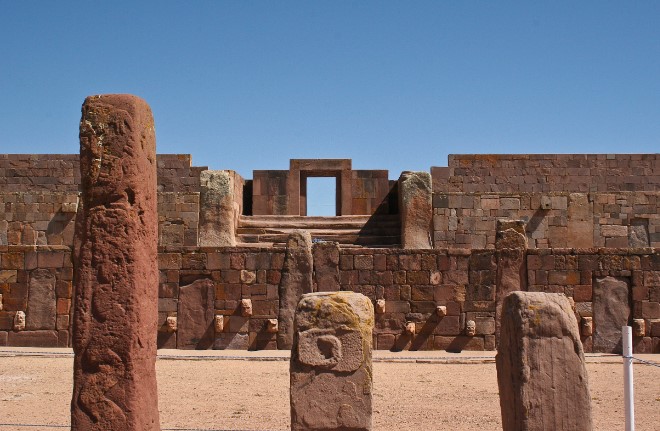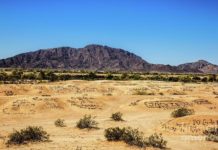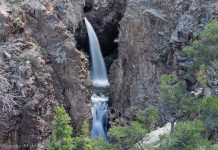Kalasasaya Temple is known for its precise and unique architectural design and engineering techniques. Kalasasaya Temple, or Stopped Stones, is regarded as one of the most significant archaeological sites of its kind in the world. Kalasasaya temple is approximately 120 x 130 meters in size, aligned with the cardinal directions.
It is believed that Kalasasaya was built around 400 BC by the Tiwanaku people, a civilization of indigenous people who lived in the region between 300 BC and 1200 AD. The temple was regarded by the Tiwanaku people as one of the most important religious centers. It was also used for agricultural rituals as well as astronomical observation. Kalasasaya is a complex temple comprised of several buildings, including a pyramid structure called the Akapana pyramid, Puma Punku, and some other buildings.
There are large, finely carved stone blocks that are used in the construction of the Kalasasaya temple. As you walk around the temple, you will find intricate carvings of a variety of figures, animals, and geometric shapes that adorn the walls. Over 130 tons of stone slabs are used to construct the temple’s roof, which is made up of a single massive slab.
In the Akapana pyramid, there are steps at the top that lead up to an enormous structure, which was probably used for ceremonial purposes. Puma Punku temple is constructed from precisely cut stone blocks that fit together like a jigsaw puzzle when they are put together exactly how they should. This platform mound has a central sunken court, as do the other platform mounds within Tiwanaku. Through an opening in its eastern wall, a monumental staircase leads down to this sunken court. Ashlar blocks alternate with sandstone pillars to create the walls. Modern reconstructions have been made to this wall.
In the Tiwanaku culture, Kalasasaya was considered an important religious and cultural center. During ancient times, the temple was used for ceremonies, sacrifices, and observing the stars. The design and engineering techniques used to construct the temple were so precise and advanced at the time of its construction that they continue to astonish archaeologists and engineers even today. There are several carvings and artworks on display in the temple, which provide insight into the culture and religion of the Tiwanaku people.
Currently, Kalasasaya is one of the most important cultural and historical sites in Bolivia. Tourists come from all over the world to see the temple, where they gain an understanding of the Tiwanaku people’s culture and history as well as see its unique architecture. Besides being a symbol of Bolivia’s indigenous heritage, the temple is also a reminder of the country’s rich history and a tribute to its diverse people. There were excavations at the site from 1957 to 1960 that resulted in the reconstruction of all four walls and the entrance gate.
The Kalasasaya Temple is one of Bolivia’s most ancient temples and one that represents the rich cultural and historical heritage of the country. There are still archaeologists and engineers who are fascinated by the temple’s precise architecture and engineering techniques, as well as its carvings and artwork that provide insight into the beliefs and cultures of the Tiwanaku people. The significance of Kalasasaya today lies in its importance both as a cultural and historical site in Bolivia and as a symbol of the country’s indigenous heritage.









